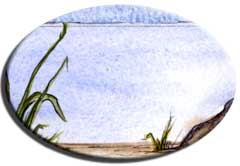How is the quality of water important in our streams, rivers and lakes?
 The quality of the water in a stream affects the health of fish and other organisms that live there as well as our ability to use the water for swimming, drinking, and other purposes. Many of our streams have high levels of pesticides, bacteria, and other contaminants. These contaminants are discharged or wash into streams from land uses such as agriculture, industry, urban and residential development, and mining operations. The pollutants can contaminate drinking water and harm plants and wildlife. Monitoring water quality can help managers identify sources of pollution and work to promote healthy streams. In monitoring of fresh water sites conducted between 2001 and 2010, greater than 50% of collection sites showed some degree of toxicity or pollution harmful to fish or other aquatic life.
The quality of the water in a stream affects the health of fish and other organisms that live there as well as our ability to use the water for swimming, drinking, and other purposes. Many of our streams have high levels of pesticides, bacteria, and other contaminants. These contaminants are discharged or wash into streams from land uses such as agriculture, industry, urban and residential development, and mining operations. The pollutants can contaminate drinking water and harm plants and wildlife. Monitoring water quality can help managers identify sources of pollution and work to promote healthy streams. In monitoring of fresh water sites conducted between 2001 and 2010, greater than 50% of collection sites showed some degree of toxicity or pollution harmful to fish or other aquatic life.
How do we measure water quality?
To measure water quality, managers can perform water toxicity tests, which measure whether a sample of water is toxic to test organisms. These can be combined with chemical analyses of pollutant concentrations in water and measurements of temperature, dissolved oxygen, and water clarity to get a more complete picture of water quality. This portal contains information on water toxicity levels throughout the state. Water chemistry information will be added to this portal in the future. The effects of bacteria on swimming safety statewide are presented in the Safe to Swim portal.
- Water Toxicity data - this page explains how well California streams can support aquatic life
- Priority Pesticides data - this page highlights data from several priority pesticides in California's urban streams
- Water Pollution - future pages will contain data from chemical analysis of pollutants in our waters

